I’m back to thinking about a novel called Jim and the Flims. I see two races—the somewhat ethereal flims and our race, which they call, let us say fatsies. And the worlds are Flimsy and Fatland.
How do they fit together topologically? I think we’ll suppose that they share the same time axis. How about the space?

The obvious idea is to use parallel branes like in Postsingular. But, just to change things a bit, one might suppose that the two branes are like the two sides of a sheet of paper, or the two sides of a wooden board.
An related alternative would be some notion of inside-out. If we simply wrap the sheet of paper into a sphere, we get a balloon with a picture on the outside and a picture on the inside. But maybe somehow there is a “balloon” for each atom. You go from one world to the other by turning each of your atoms inside out.
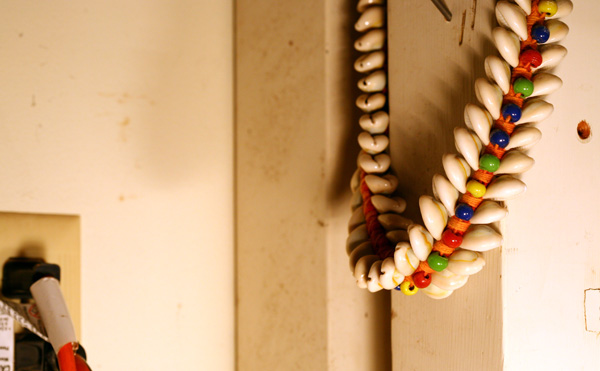
For the moment let’s stick with the sheet with two sides—or, more accurately, a hypersheet bounded by a pair of three-dimensional hyperplanes: Flimsy and Fatland. How do you get from one to the other?
I suppose you tunnel through. If we do this abruptly, then it’s a matter of making a right-angle turn into the fourth dimension, drilling through the bulk, and then making another right turn to get back into the other universe. But I’d like to see a more gradual transition, something more along the lines of Sheckley’s “The Altar” , which I posted about last week.

I suppose there could be a sloping tunnel that leads through the bulk, and when you ease into it, you can see the source universe in certain directions and the target universe in the other directions. The tunnel might be quite short—more like a doorway or a portal—so that you don’t have a lengthy zone of darkness in between the worlds. I used a portal of this kind in Mathematicians in Love.
In order to require the back-and-forth thither-and-yon bumbling of the “Altar” approach, we might suppose that our space is rucked up and folded over, so that the tunnel’s mouth can only be reached by going along a certain path. I think of a process like scraping away paint—you go back and forth past a certain alleyway, and each time you pass, the alley looks a little different, and finally it leads to Flimsy.
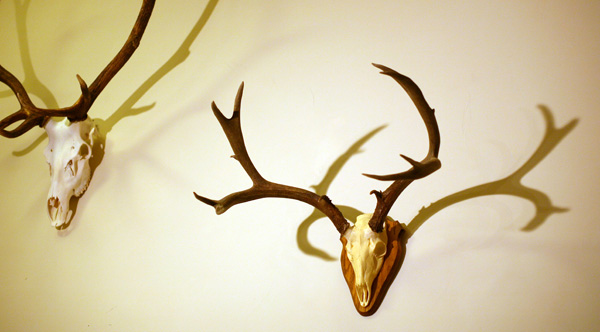
We might suppose that my character Weena came through this tunnel, but that she can’t find her way back from our side. My character Jim finds the way for Weena, aided by his dog Arf—he hits on the Sheckleyesque spinor path between worlds
Alternately, I might consider there being a whole range of ways to travel between Fatsy (our world) and Flimsy (Weena’s world). I’ll display some options in a bulleted list:
- The method of moving along an odd path in fashion of Sheckley’s “The Altar.” For some possibly relevant science, See the Plate Trick entry on Wikipedia, and the one on Orientation Entanglement.
- Pushing through a rubbery mirror as in Carroll’s Through the Looking Glass.
- Drawing a door on a wall and then opening it. This is pretty common, I think it’s in, for instance, the movie Pan’s Labyrinth.
- Walking though a magic door that’s hidden in a kind of closet, like in The Lion, the Witch and the Wardrobe. Or through a tunnel in a dungeon. This tunnel/portal/door method is the one I’m most likely to use.
- Meditating on a certain pattern, like in my novel Postsingular. This is similar to chanting a spell, in that it involves getting a certain pattern going in your mind.
- I see a visual of someone literally turning inside out via a 4D rotation. The two worlds are related like the outside leather and the inside silk of a glove. You turn inside out—ugh—and then you snap over to the other side.
- Eating something—like a magic potion, a drug, or matter from the other world.
- Clasping a magic amulet, possibly made from alternate world stuff.
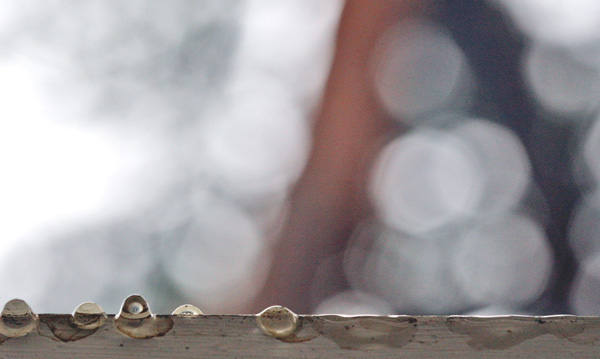
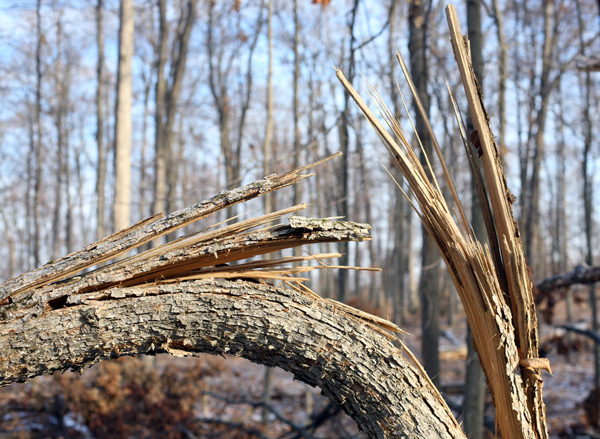
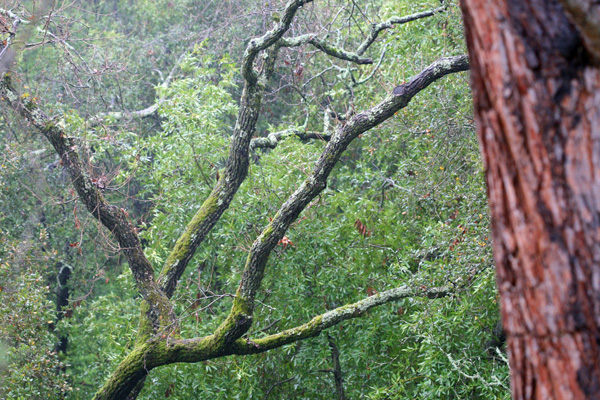
Note that these travel methods might apply to different kinds of models as well.
I’m thinking that I feel a little bored with the two brane model. I’ve used it before. I’d like something spookier, something more fantasy-like. Today I’m leaning towards the notion that the other world in some sense overlays our existing world. The two worlds aren’t separate hyperplanes or different locations, they’re in the same place. The Land O’ Faerie is one and the same as our mundane world, if only we have the eyes to see it.
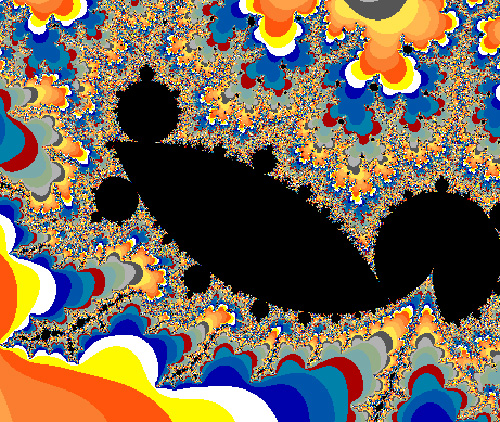
In fantasy novels this kind of thing is simply left unexplained. “The horns of Elfland, faintly blowing…” But, as is my habit, I grope for a scientific model. Suppose that the two overlaid worlds are in some sense at an angle to each other—that is, Flimsy (or the Land O’ Faerie) is made of matter particles whose quantum spins are rotated by, let us say, 13.711 degrees. And normally these rotated particles don’t interact with ours. They might, come to think of it, be dark matter! In effect, we blinkered mundanes see through polarized sunglasses—which filter out the views of the wondrous.

We might also suppose that some cosmic clock is turning, bringing Faerie into full overlap with Main Street. The dark matter spires are gonna be shimmering into view. And already, as harbingers, certain nimble humans and flims can twist and untwist themselves to dart from world to world. Sometimes a half-transformed Flimsy creature will bump against you in the dark—I think of some pony-sized dogs that I call yuels. You don’t see anything, but you feel the brush of a yuel’s hot flank, and you smell his rancid, meaty breath.
And in the night, the barking of the seals shades into the unearthly baying of the yuels. Rapid footsteps sound on Jim’s porch…









January 28th, 2009 at 11:48 pm
I like the Harry-Potter-way: a secret platform/track in a railway-station
January 29th, 2009 at 1:11 am
The magic amulet and pattern meditation combined seemed to work pretty well for Charlie Stross in the Merchant Princes books. I’ve always been a fan of the idea of drawing a door and then opening it (must be because I loved Harold And His Purple Crayon so much as a little ‘un) although it has been used quite a lot now.
Of that list though I’d love to see the idea of someone turning inside out being used. It’s by far the most bizarre, unlikely and just plain fun 🙂
January 29th, 2009 at 5:38 am
Kehrtraud : Rudy already did the Harry Potter secret portal way back in 1983, in _Message Found in a Copy of Flatland_ which by the way gets a a good mention in _Unknown Quantity: A Real and Imaginary History of Algebra_ by John Derbyshire.
_Harold And His Purple Crayon_ is a masterpiece, I use it here in Japan to teach my kids English.
What about something like the film _Altered States_? That had some awesome ideas for transforming yourself!
January 29th, 2009 at 6:51 am
it would be complicated, but you could use all of the above thereby explaining how each is only another mapping of the same brane to brane transition. meta-sci-fi. Perhaps something in the other brane keeps closing off each pathway as it is discovered. and the pathways get increasingly dangerous.
Maybe that transition must get faster each time or you will get stuck, or attacked by the things, in the middle.
January 29th, 2009 at 8:58 am
Some more ideas came to my mind today:
– You take a commuter train, but you fall asleep and so you stay in the train when it leaves the last station. The rails have the form of a Moebius-band and the train continues its way to the other side.
– or the elevator in a dark subterrainean garage: When you press the down-key instead of the upwards-key.
– Or an endless elevator in an old building – we call it a Paternoster – you must leave the cabin in the right moment, when it is passing through the cellar.
– I was in a supermarket parking lot this morning. There were little huts, where you fetch and store your trolley. This huts are never empty. But if they would be empty, you could just pass through the backwall.
January 29th, 2009 at 9:48 am
What about what happens to a black hole once all its matter has evaporated due to Hawking radiation. Is there a tear in spacetime? Possibly between two “close” dimensions/realities/branes/etc.? Does the tear stay after evaporation? Are there black holes on both sides? Or is the analog position opposite of the black hole an empty field or a dark alleyway?
Maybe the side with the evaporated black hole found it and built a port around with banners reading something like “Visit Beautiful Fatland!”
I always liked the idea of black holes leading to other planes, but surviving the trip always seemed a problem.
January 29th, 2009 at 2:25 pm
Hey, Matt. The SCIIENTIFIC AMERICAN has a big article about “naked singularities” this month…these are spacetime cusps that happen NOT to be hidden inside a black hole. I don’t think I’ll be using these in my novel, though. I’m into more lo-tech, find-it-in-an-alley kinds of dimensional transport these days, as opposed to the more space operatic “holes in space”…not that I don’t those things too, I wrote about them in FREK AND THE ELIXIR.
January 29th, 2009 at 2:26 pm
Cannonball, thanks for the encouragement. I may go with the “turn inside out” scenario. Like you say, it’s fresh and striking. And it’ll be fun to describe.
January 30th, 2009 at 2:03 pm
Rudy, maybe the Flims are light and airy compared to us, and maybe once they’ve gotten into our world they have to climb tortuously back out? Maybe they gain volume and mass here by picking up particles from Fatland, cf. calf liver, and have to shuck those particles off to return home, possibly leaving behind memories or skills they acquired here? In other words, we don’t see them because it’s hard and painful for them to go back. Easy for them to jump in, hard to climb back out, and once they are here, they don’t want to go back.
I turned myself inside out and became an extrovert when I was about fifteen, but I don’t remember how I did it.
January 31st, 2009 at 12:06 am
Suppose that the two overlaid worlds are in some sense at an angle to each other—that is, Flimsy (or the Land O’ Faerie) is made of matter particles whose quantum spins are rotated by, let us say, 13.711 degrees. And normally these rotated particles don’t interact with ours.
Those two sentences just jarringly altered my perception of reality.
January 31st, 2009 at 6:48 am
A recent Japanese anime film featured a Black Hole as a living creature, called “Blackholechi”.
http://en.wikipedia.org/wiki/index.html?curid=15851004
January 31st, 2009 at 10:34 am
Wow: fun trying to wrap my head around “orientation detanglement”.
I liked Moorecock’s Bastable series (The Warlord of the Air)–which is somewhat similar to Sheckley’s; the hero wanders through a dark, labyrinthine ancient ruins, in a fever/drugged/delusional state. When he miraculously makes his way out again, he’s in a different time/history. It is inferred that perhaps there are many times he could have wandered out through. I think I like it because the confusion of being “lost” rips the character from his own, static world, and allows him to be deposited in a new one. Who knows where you might end up without cardinal directions!
But if cardinal directions are our anchor to 3D space, perhaps this is even more interesting: when I took geometry in school, I was always fascinated by isometry, or reflection. http://en.wikipedia.org/wiki/Reflection_(mathematics) How bizarre that we can only visualize the concept by the word “phrase image”, which itself is only an illusion! When it gets to 3D space, then it really starts to get wacky. There are isometric (if this is the correct mathematical adjective, I have no idea) molecules in biology, with reflected but not-identical structures. Sometimes the can replace each other, sometimes not! I believe in the “Prolegomena” Kant discusses how “right” and “left” are a true example of the relative quality of space–in simpler terms, there is nothing that is descriptively different between right and left, other than the fact that they are definitely not the same in space. From this we can (or at least Kant can) see that all space is relative to observation, and not the things themselves. No South, no North, just right and left. This has been blowing my mind since the 10th grade. And aren’t our hands perhaps the basis for our entire binary way of thinking? Is a mirror the way we look at ourselves, or at our entire world?
All this is a little much for me at 10:30 in the morning!
January 31st, 2009 at 11:41 am
I like the concept of the other world overlaying ours in a special way, because it’s a tricky yet elegant solution, and also fairly plausible, in that our “reality” is a matter of perception, that is, it’s a mental construct inside our brains. Maybe the characters physically or chemically re-wire their neuro-systems in order to perceive the alternate world.
I’m reminded of Chris Marker’s short film La Jetee wherein the protagonist takes a special drug that allows him to time travel. For if time is a brain-created illusion, then it seems possible that you could “unmoor” your brain from the illusion and float free in time.
Which in turn reminds me of Einstein’s idea that dead people are still here, but are invisible because they move at a much faster rate.
I think it would be fun to explicitly identify the alternate world with the Land O’ Fairie — lots of material to play with. It’s interesting to note that some researchers (e.g., Jacques Vallee) connect ancient “fairy” or “demon” sightings with modern UFO sightings.
I agree that dark matter would be a good way to tie all this together.
February 2nd, 2009 at 10:36 pm
Thinking more on the quantum-spin/overlap idea (whether or not Rudy is using it, just because I’m fascinated by it): suppose you are able to shift the rotation of your quantum spins with some other world’s — how do you know (or what are the rules-in-place that you can use to assume) that you won’t end up materializing inside a rock, or in the path of a moving object, or in a vacuum, etc.?